Nội Dung Chính
(Page 84)
VII. COMMUNICATION AND CULTURE / CLIL
Everyday English
Getting attention and interrupting
1. Listen and complete the conversations with the expressions in the box. Then practise them in pairs.
| A. I'm sorry for interrupting B. Do you mind C. Hey D. May I have your attention |
1.
Nam: (1) _____, Nick!
Nick: Yes, Nam.
Nam: (2) _____ if I ask you a few questions about our project on robots?
Nick: Not at all. Go ahead.
2.
Speaker: (3) _____ please? Today, I'm going to talk about some applications of Al in education.
Phong: (4) _____ but could you please explain the topic of your talk?
Speaker: Sure, we're going to find out how Al can support teachers and students.
Phong: understand now. Thanks.
2. Work in pairs. Use the models in 1 to make similar conversations for these situations. One of you is A, the other is B. Use the expressions below to help you.
1. A is at a museum or robot exhibition where he/she can see B in the crowd, A wants to get B's attention.
2. A is a scientist giving a talk on the use of Al at home. B is in the audience, and he/she wants to interrupt the scientist to ask a question.
| Useful expressions |
| Getting attention | Interrupting |
| Formal • May I have your attention, please? • Could I ask you a question? • Can I have a few seconds/a moment of your time? Informal • Look!/Listen!/Watch! • Excuse me! • Sorry to bother you. Hey! | Formal/Semiformal • I'm sorry for interrupting/to interrupt, but I don't quite understand... • Sorry for the interruption, but could you (repeat)... • This will only take a minute. Would you mind (telling me)... • I apologise for the interruption, but I have an important question about ... • Pardon me/Excuse me, I have ... Informal • Hold on! • Just a second. |
(Page 85)
CLIL
1. Read the text and complete the timeline showing the evolution of robots.
THE EVOLUTION OF ROBOTS
The word 'robot' was first used in 1920. It comes from the Czech word 'robota', which means 'forced labour' used in a play by Karel Čapek to describe artificial people.
In 1949, the British inventor William Grey Walter introduced the first machine which could slowly move in response to light stimulus. Ten years later, the first industrial robotic arm was installed at a General Motors plant in the US. Such robots are mostly used in car and computer industries.
The first robot to use Artificial Intelligence was known as Shakey. It was developed at Stanford Research Institute between 1966 and 1972. Shakey could observe its surroundings, create a plan, and find its way across a room or push a box along the floor. Twenty years later, a walking robot called Dante, which was capable of climbing steep slopes, was built to go into active volcanoes.
The late 1990s marked a milestone in the history of robots when Kismet, a robotic head designed to provoke and react to emotions, was created.
Since the beginning of the 21st century, more robots have been created to improve our life. The first self-driving car was launched on 8 October 2005 when a Volkswagen Touareg named *Stanley' won a racing competition across the desert. In 2012, the Al expert Geoffrey Hinton and his team created the first accurate visual recognition system.
In 2016, Sophia, a human-like robot was introduced. Sophia can imitate human gestures and facial expressions and is able to answer certain questions and to make simple conversations.
In the future, we may see more robots and Al applications. Whether we accept them or not, they will continue to play an important role in all aspects of our lives.
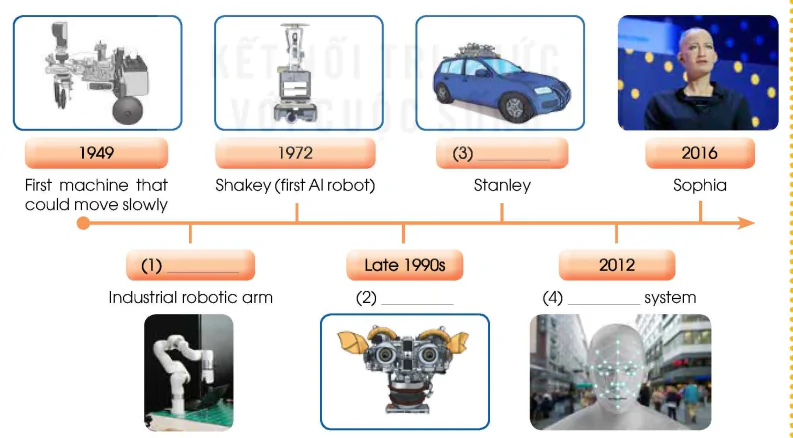
1949: First machine that could move slowly
(1) _____: Industrial robotic arm
1972: Shakey (first AI robot)
Late 1990s: (2) _____
(3) _____: Stanley
2012: (4) _____ system
2016: Sophia
2. Work in pairs. Discuss the following questions.
What types of Al are widely used in Viet Nam? How do you think robots and Al will develop in Viet Nam in the future?
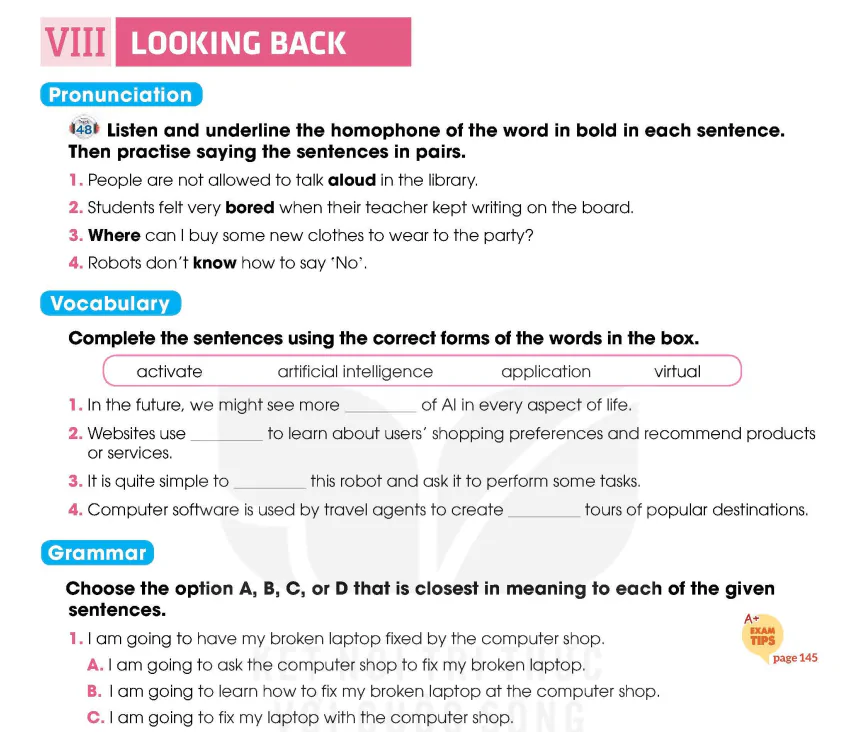
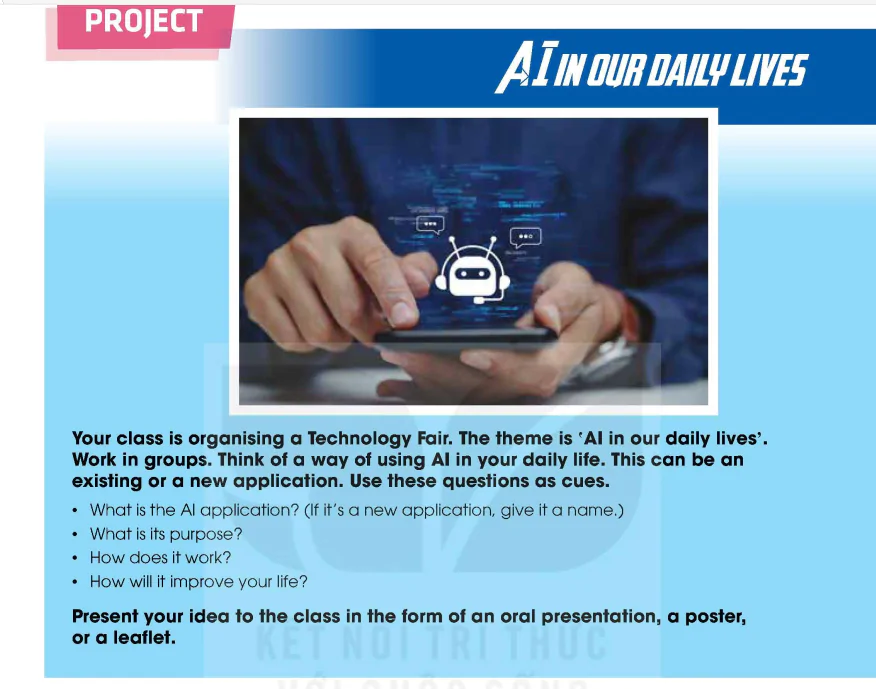


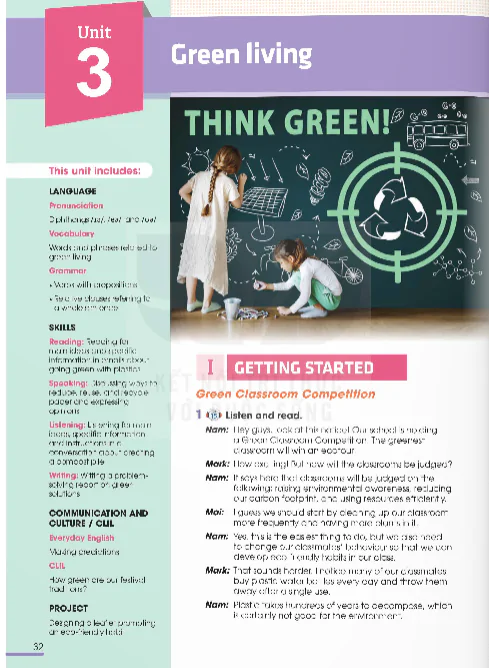
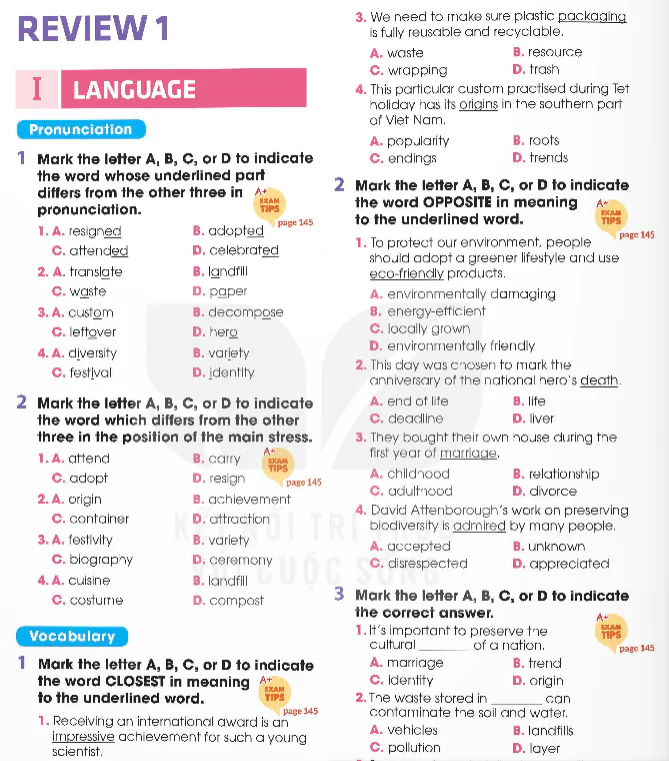
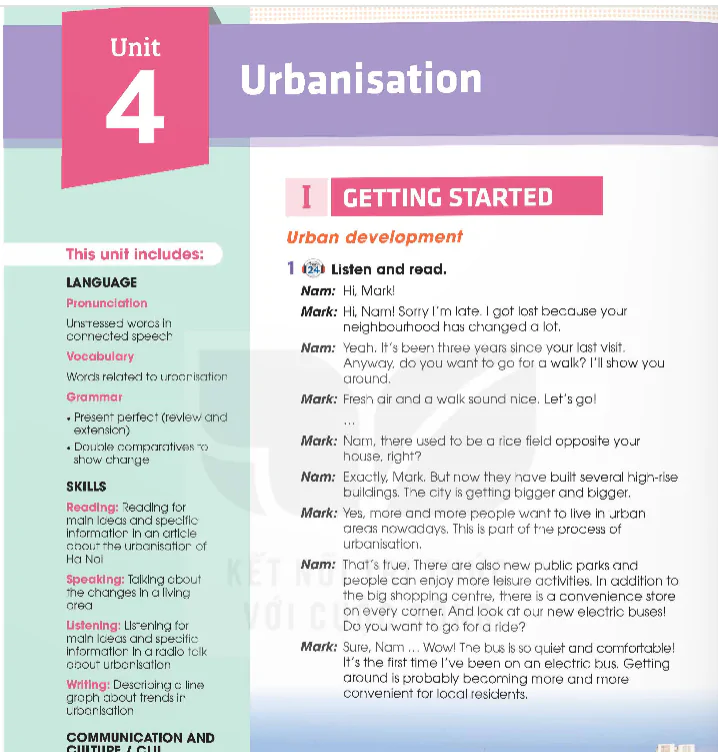
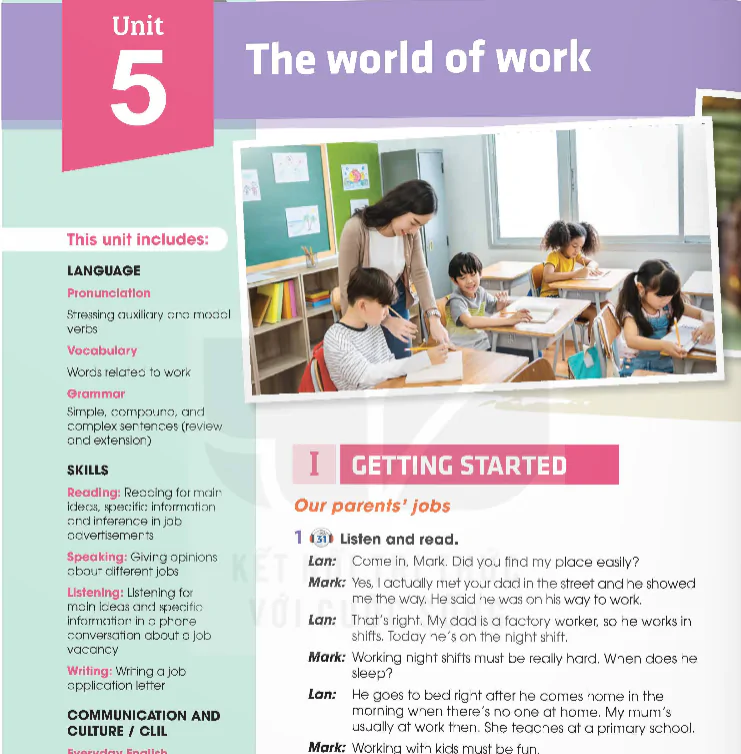
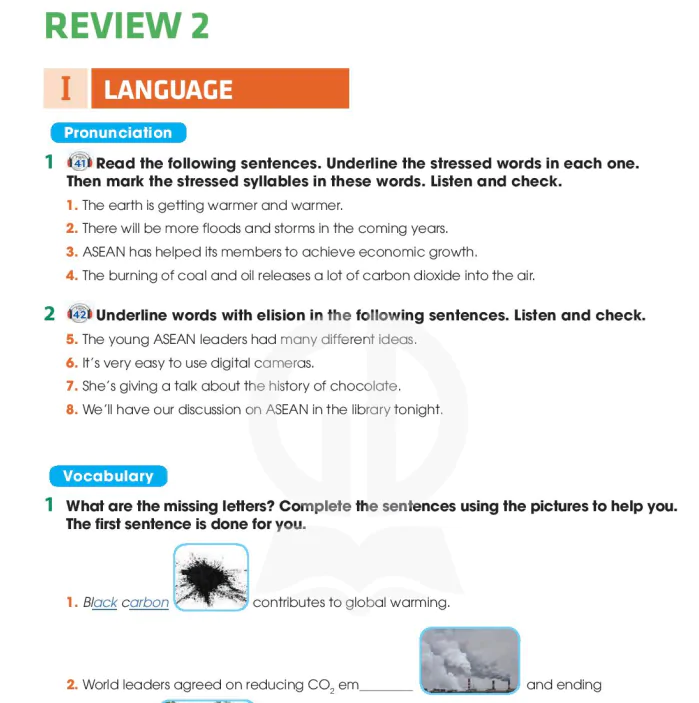
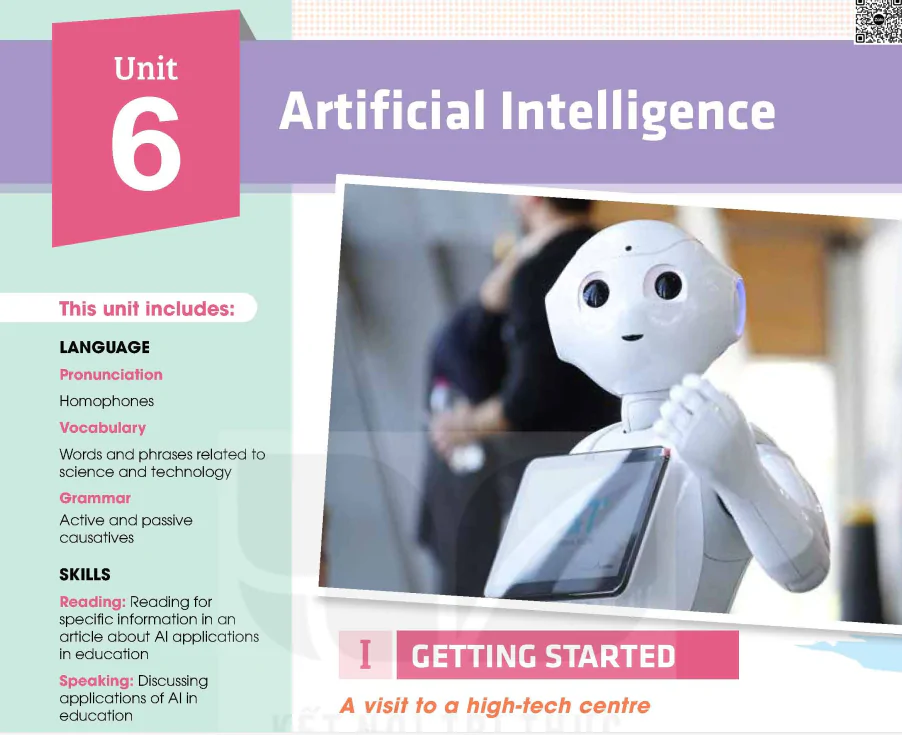
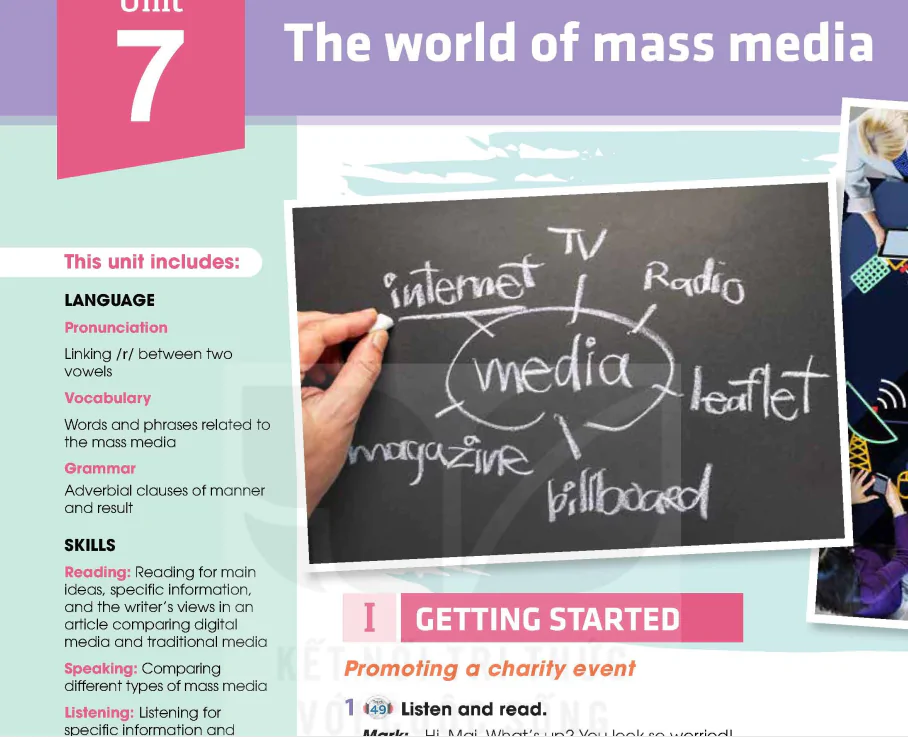

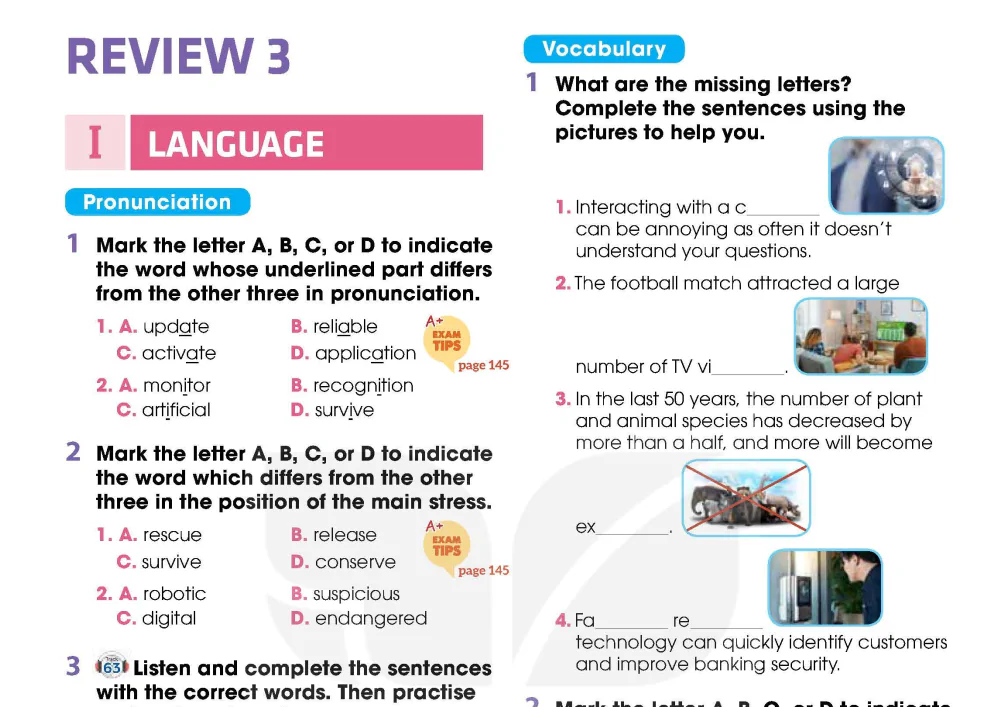
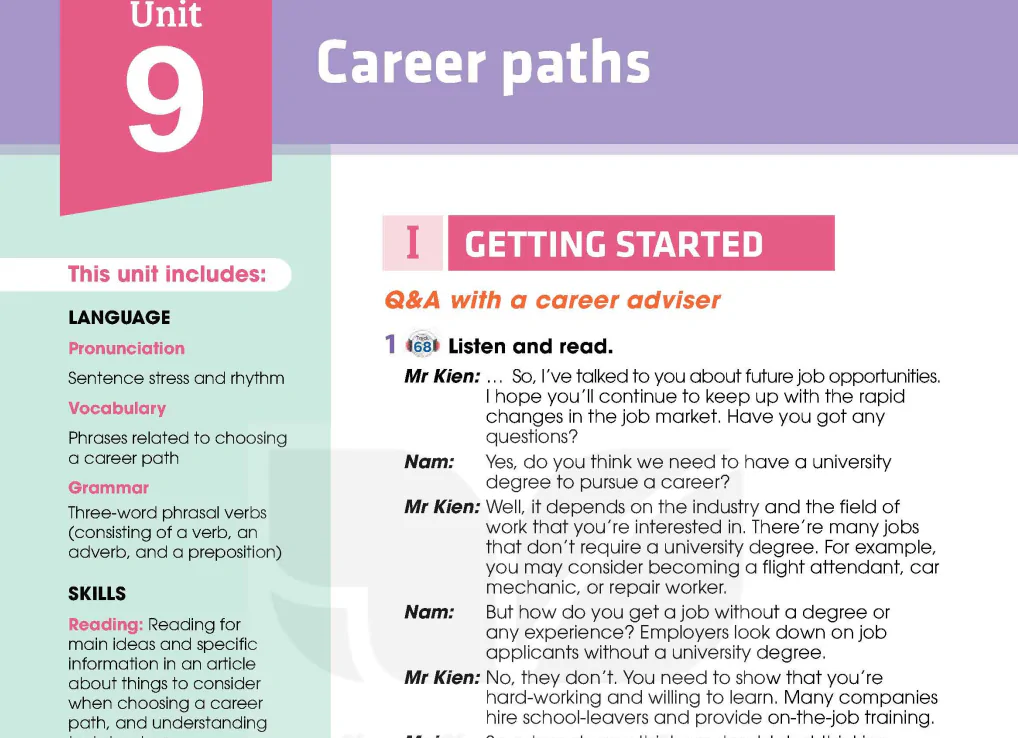
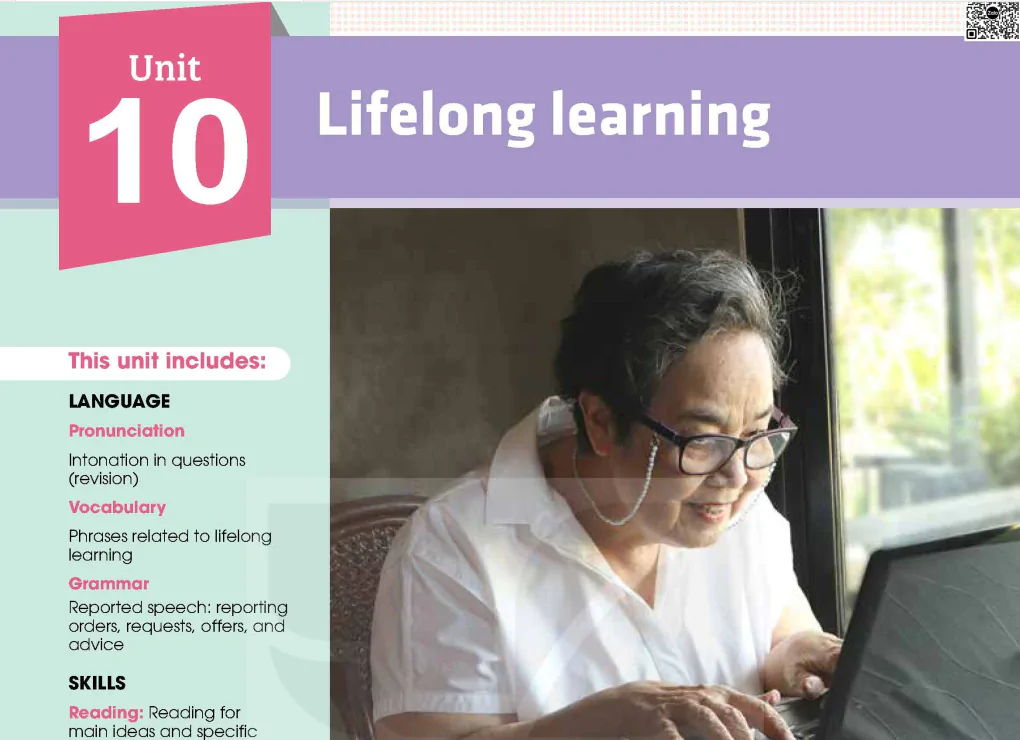
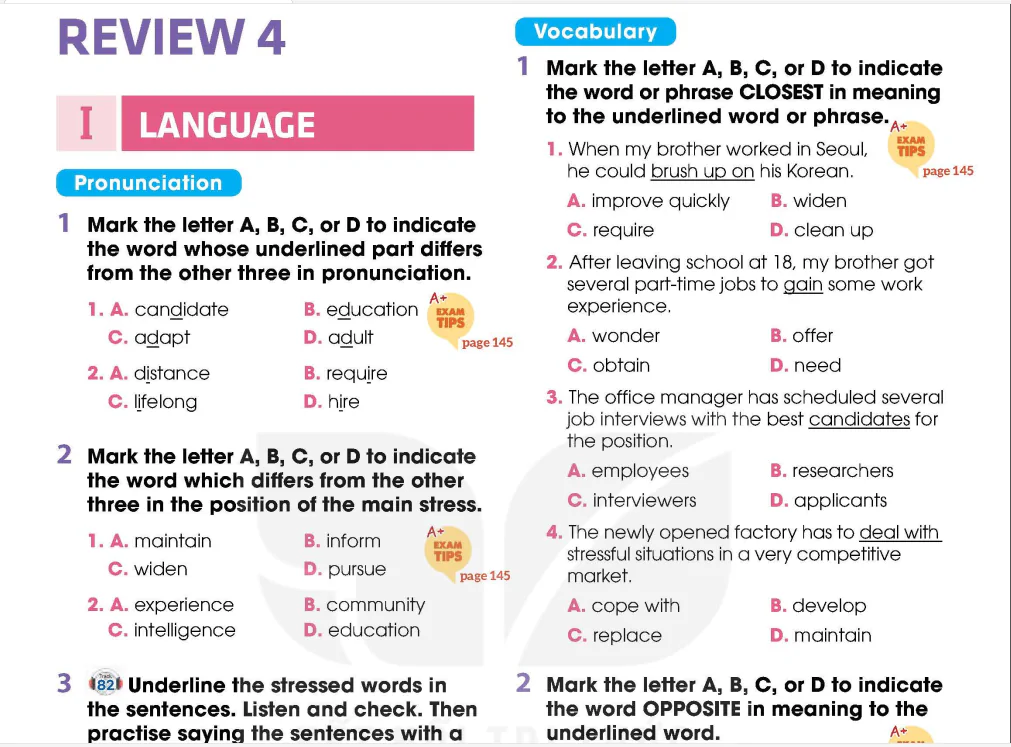
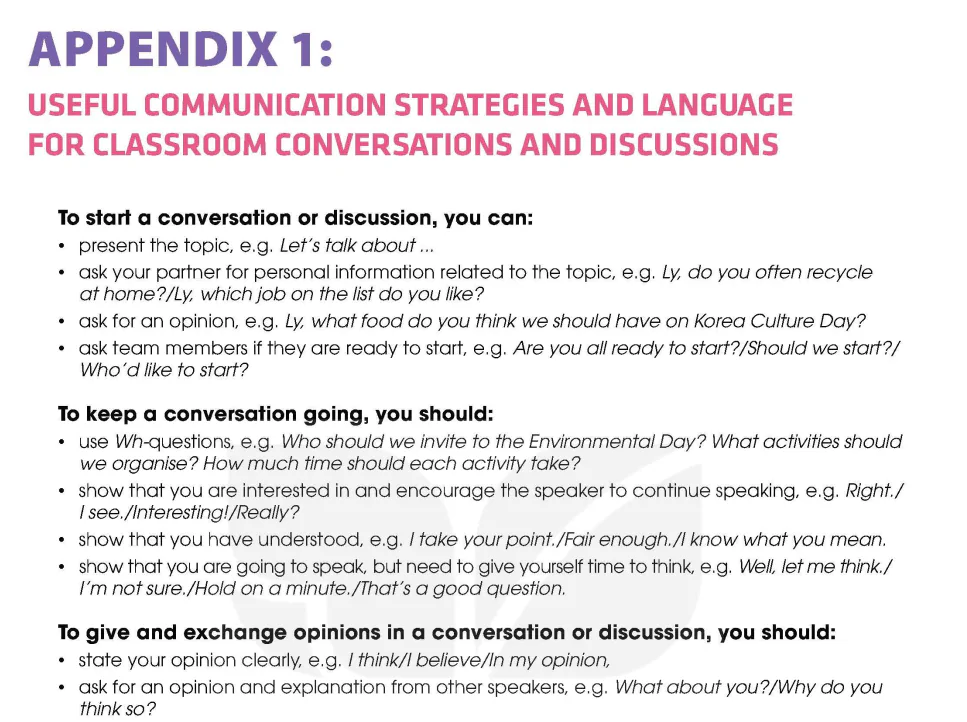
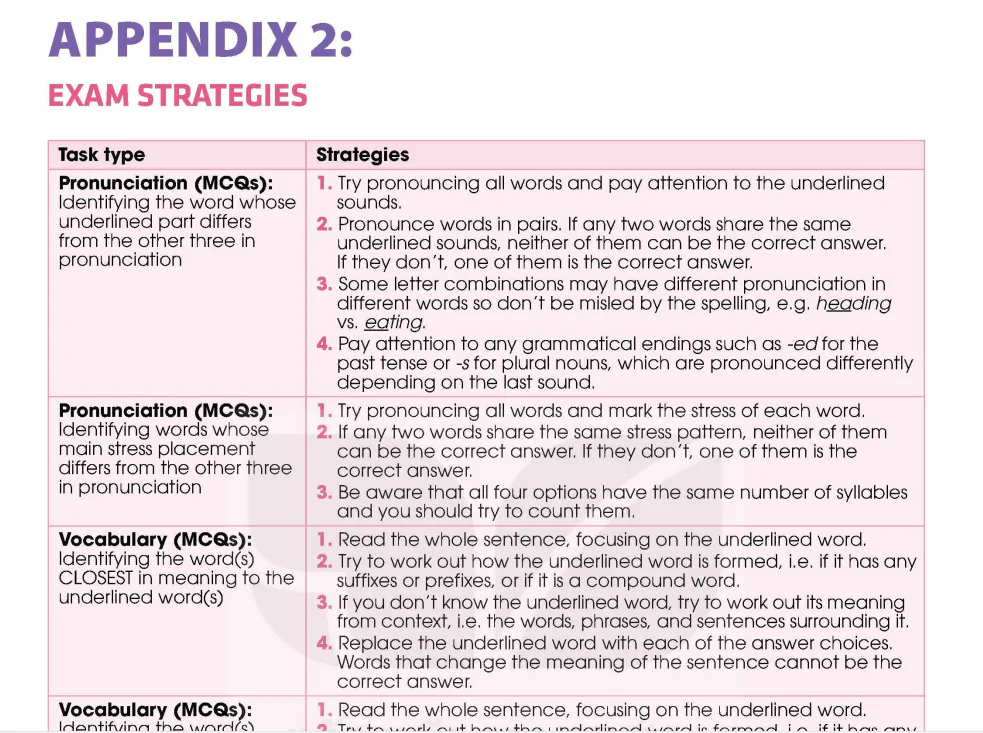
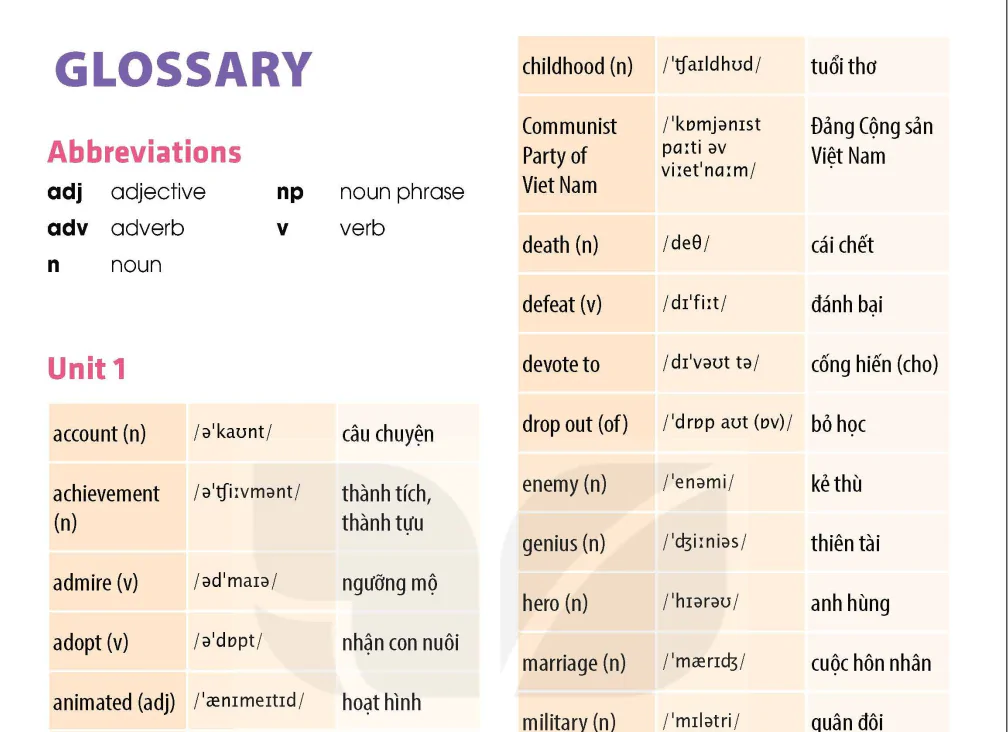



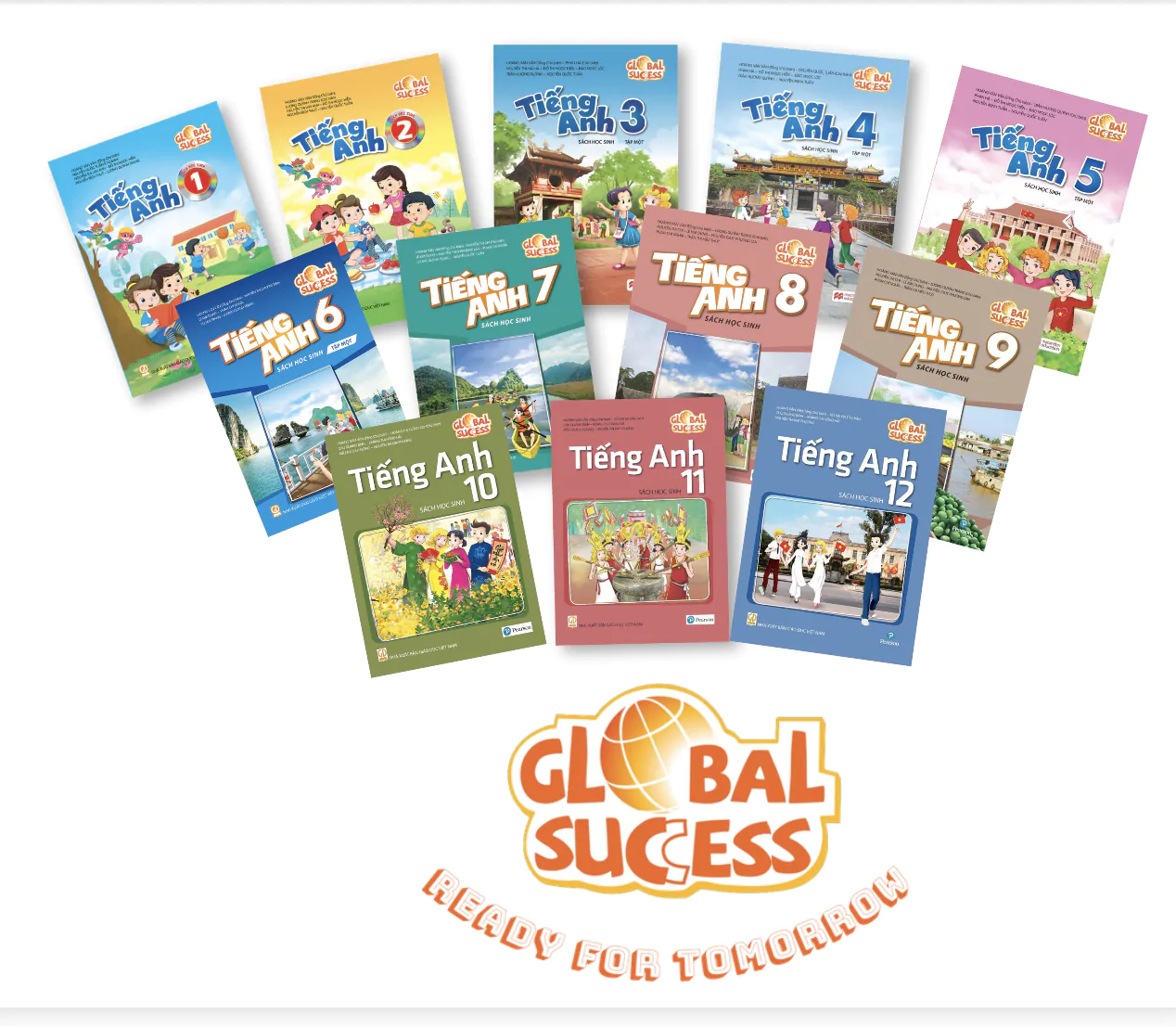














Bình Luận
Để Lại Bình Luận Của Bạn